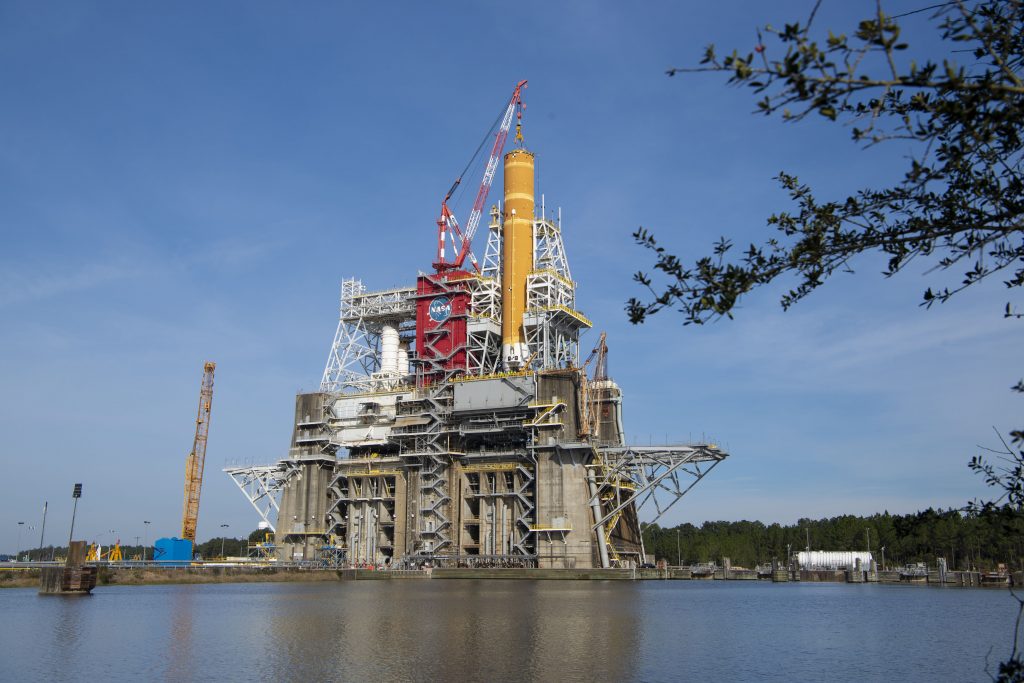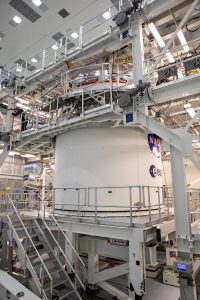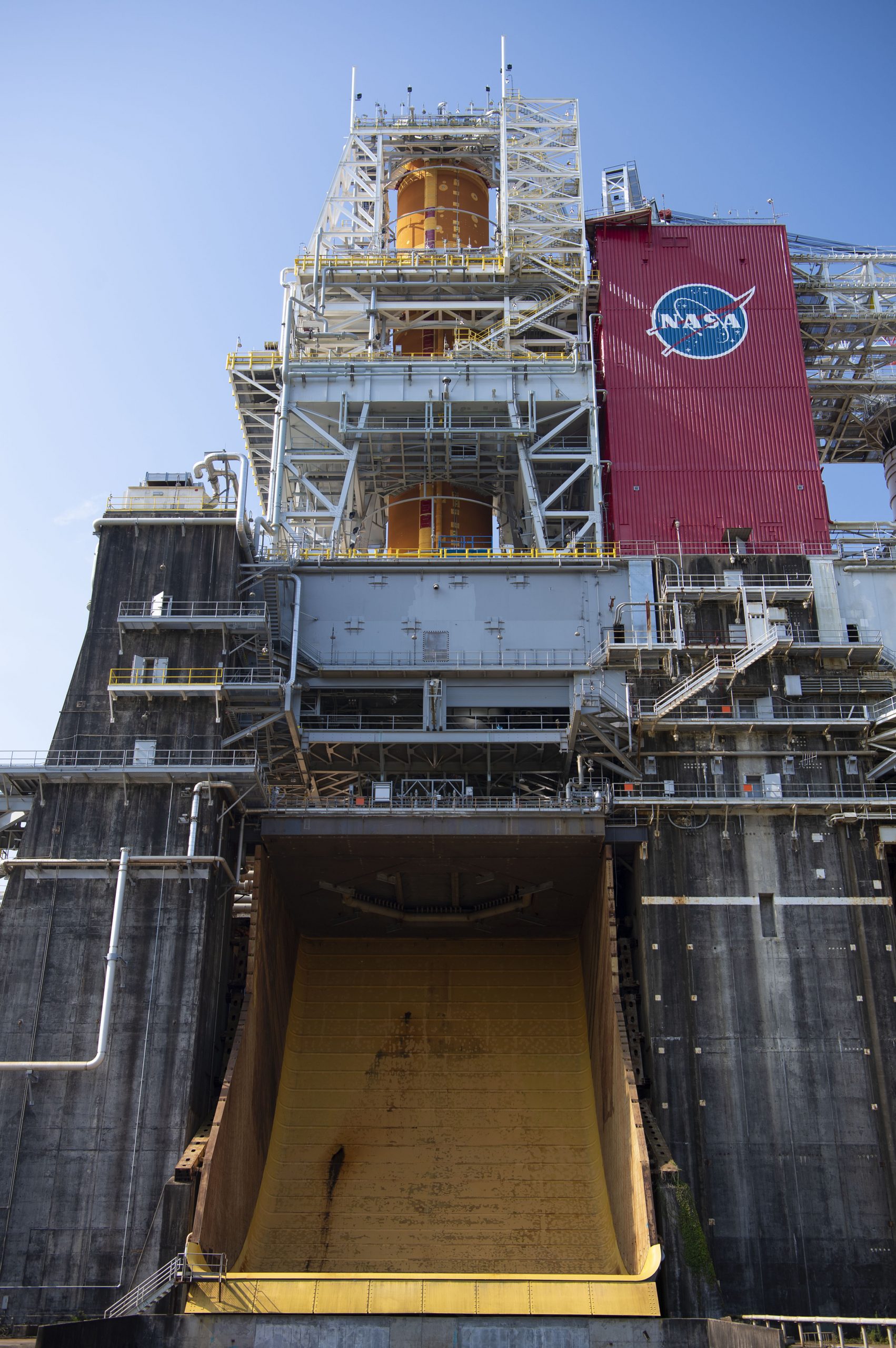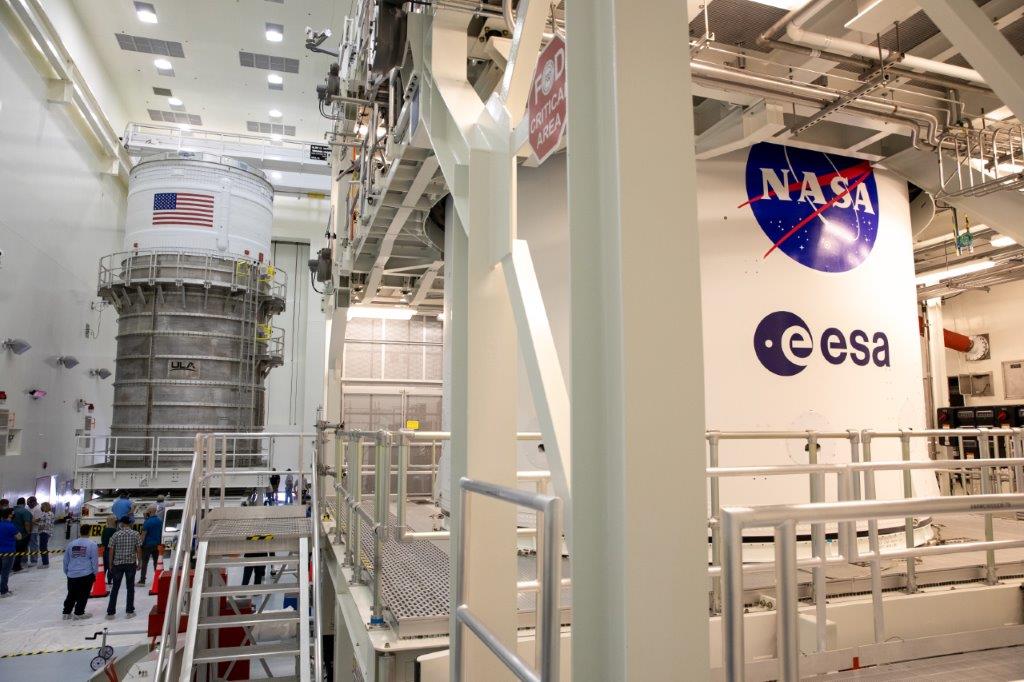
The Space Launch System (SLS) rocket’s interim cryogenic propulsion stage (ICPS) moved into the Multi-Payload Processing Facility February 18, 2021, at NASA’s Kennedy Space Center in Florida alongside one of its flight partners for the Artemis I mission, the Orion spacecraft. Both pieces of hardware will undergo fueling and servicing in the facility ahead of launch by teams from NASA’s Exploration Ground Systems and their primary contractor, Jacobs Technology. The rocket stage and Orion will remain close during their journey to space.
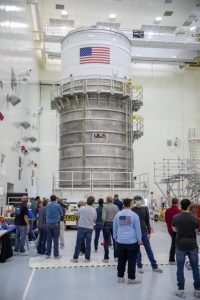
Built by United Launch Alliance and Boeing, the ICPS will be positioned above the core stage and will provide the power needed to give Orion the big push it needs to break out of Earth orbit on a precise trajectory toward the Moon during Artemis I.
This is the first time since the shuttle program that two pieces of flight hardware have been processed inside this facility at the same time. Once final checkouts are complete, the ICPS and Orion will part ways on the ground and be reunited in the Vehicle Assembly Building for integration onto the SLS rocket.
Artemis I will be an integrated flight test of the SLS rocket and Orion spacecraft ahead of the crewed flights to the Moon. Under the Artemis program, NASA will land the first woman and the next man on the lunar surface and establish a sustainable presence at the Moon to prepare for human missions to Mars.
View additional photos here.

